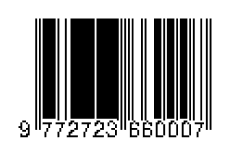Analisis Evaluasi Kesesuaian Lahan Beberapa Komoditas Pertanian Tanaman Pangan di Pulau Nusalaut Kabupaten Maluku Tengah
DOI:
https://doi.org/10.59141/jiss.v3i11.729Keywords:
Nusalaut Island, Land Evaluation, Land Suitability, Food CropsAbstract
This research was conducted on Nusalaut Island, Central Maluku Regency, aiming to determine the land suitability class of several food crop commodities. Data collection and analysis methods include: (1) analysis of thematic maps, (2) preparation of Land Unit Maps (PSL), (3) field checking using the field survey method, which uses independent survey techniques; (4) observation of land characteristics and quality in each land unit, and (5) analysis of land characteristics and quality in each land unit. The follow-up analysis is in the form of: (1) determining the level of land suitability and (2) producing a map of land suitability classes for food crop commodities on the island of Nusalaut. The results of the assessment of land suitability class on food crops cassava, sweet potato, and corn included in the category of marginally suitable class (S3) with limiting factors of water availability (wa), rooting media (rc), slope (eh) and unsuitable class (N). Cassava plantations had a marginally suitable class (S3) with a limiting factor (wa, rc) of 1452.4 ha or 66.51% and for an unsuitable class (N) of 731.52 ha or 33.50%. Sweet potato plants have a marginally suitable class (S3) with a limiting factor (wa, rc, eh) covering an area of 1452.38 ha or 66.5% and for an unsuitable class (N) an area of 731.52 ha or 33.50%. Corn plants have a marginal suitable class (S3) with a limiting factor (wa, rc) covering an area of 1452.38 ha or 66.5% and for an unsuitable class (N) an area of 731.52 ha or 33.50%.
References
Faisol, A., Paga, B. O., & Edowai, D. N. (2022). Pemutakhiran Zona Iklim Schmidt–Ferguson Melalui Pemanfaatan Data Climate Hazards Group Infrared Precipitation with Stations untuk Mendukung Pengembangan Pertanian di Provinsi Papua Barat. Prosiding Seminar Nasional Pembangunan Dan Pendidikan Vokasi Pertanian, 3(1), 546–556. https://doi.org/0.47687/snppvp.v3i1.338
Firnia, D. (2018). Dinamika unsur fosfor pada tiap horison profil tanah masam. Jurnal Agroekoteknologi, 10(1). https://doi.org/10.33512/j.agrtek.v10i1.5464
Fitrianto, D., Senoaji, G., & Utama, S. P. (2019). Analisis Kesesuaian Lahan Untuk Permukiman Transmigrasi Di Pulau Enggano Kabupaten Bengkulu Utara. Naturalis: Jurnal Penelitian Pengelolaan Sumber Daya Alam Dan Lingkungan, 8(2), 63–75. https://doi.org/10.31186/naturalis.8.2.9210
Gayo, A. A. P., Zainabun, Z., & Arabia, T. (2022). Karakterisasi Morfologi dan Klasifikasi Tanah Aluvial menurut Sistem Soil Taxonomy di Kabupaten Aceh Besar. Jurnal Ilmiah Mahasiswa Pertanian, 7(3). https://doi.org/10.17969/jimfp.v7i3.20885
Marasabessy, I., Marasabessy, A., Tualeka, O. N. A., & Tualeka, D. I. (2021). Penentuan Klaster Wilayah Kecamatan Berdasarkan Pusat Pelayanan Masyarakat di Wilayah Kepulauan Kabupaten Maluku Tengah Provinsi Maluku. Agrokreatif: Jurnal Ilmiah Pengabdian Kepada Masyarakat, 7(3), 314–325. https://doi.org/10.29244/agrokreatif.7.3.314-325
Moulia, E. (2019). Analisis komunitas bakteri tanah sulfat masam dari dua tipe lahan rawa di Kalimantan dengan pendekatan Next Generation Sequencing (NGS). Fakultas Sains dan Teknologi Universitas Islam Negeri Syarif Hidayatullah …. https://repository.uinjkt.ac.id/dspace/handle/123456789/48297
Mulyani, A., Ritung, S., & Las, I. (2011). Potensi dan ketersediaan sumber daya lahan untuk mendukung ketahanan pangan. Jurnal Litbang Pertanian, 30(2), 73–80. Balai Besar Penelitian dan Pengembangan Sumberdaya Lahan Pertanian, Badan Penelitian dan Pengembangan Pertanian (Ritung
Muryono, S., & Utami, W. (2020). Pemetaan potensi lahan pertanian pangan berkelanjutan guna mendukung ketahanan pangan. BHUMI: Jurnal Agraria Dan Pertanahan, 6(2), 201–218. https://doi.org/10.31292/bhumi.v6i2.431
Pembuain, M. F., Pattinama, M. J., & Leatemia, E. D. (2022). STRATEGI ADAPTASI PETANI TERHADAP PERUBAHAN IKLIM UNTUK MEMPERTAHANKAN PRODUKSI JAGUNG DI DESA MANUWERI KABUPATEN MALUKU BARAT DAYA. Agrilan: Jurnal Agribisnis Kepulauan, 10(2), 143–157. https://doi.org/10.30598/agrilan.v10i2.1423
Renyut, L. R., Kumurur, V., & Karongkong, H. H. (2018). Identifikasi Dan Pemetaan Lahan Kritis Dengan Menggunakan Teknologi Sistem Infomasi Geografis (Studi Kasus Kota Bitung). SPASIAL, 5(1), 92–104. https://doi.org/10.35793/sp.v5i1.19101
Risamasu, R. G. (2016). Analisis Kesesuaian Lahan Untuk Pengembangan Komoditi Perkebunan Potensial di Kecamatan Leitimur Selatan Kota Ambon. Jurnal Budidaya Pertanian, 12(2), 95–100. https://ojs3.unpatti.ac.id/index.php/bdp/article/view/329
Wanderi, W., Qurniati, R., & Kaskoyo, H. (2019). Kontribusi tanaman agroforestri terhadap pendapatan dan kesejahteraan petani. Jurnal Sylva Lestari, 7(1), 118–127. http://repository.lppm.unila.ac.id/10719/
Published
How to Cite
Issue
Section
License
Copyright (c) 2022 Semuel Laimeheriwa, Robby G. Risamasu, Reni Tomasoa, Edison Jambormias

This work is licensed under a Creative Commons Attribution-ShareAlike 4.0 International License.
Authors who publish with this journal agree to the following terms:
- Authors retain copyright and grant the journal right of first publication with the work simultaneously licensed under a Creative Commons Attribution-ShareAlike 4.0 International. that allows others to share the work with an acknowledgement of the work's authorship and initial publication in this journal.
- Authors are able to enter into separate, additional contractual arrangements for the non-exclusive distribution of the journal's published version of the work (e.g., post it to an institutional repository or publish it in a book), with an acknowledgement of its initial publication in this journal.
- Authors are permitted and encouraged to post their work online (e.g., in institutional repositories or on their website) prior to and during the submission process, as it can lead to productive exchanges, as well as earlier and greater citation of published work.














